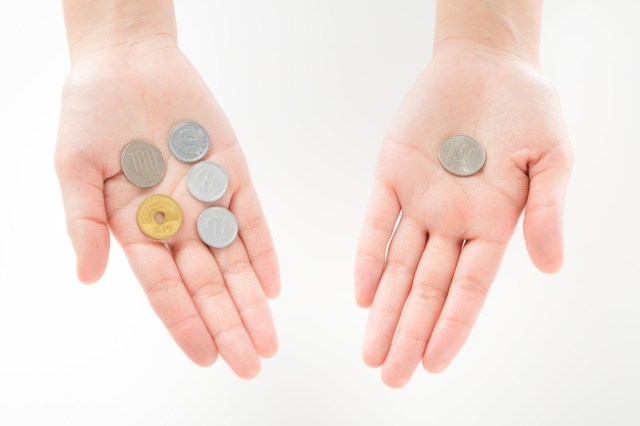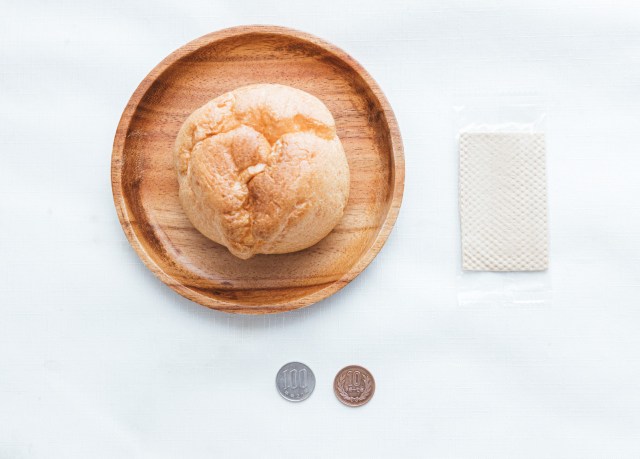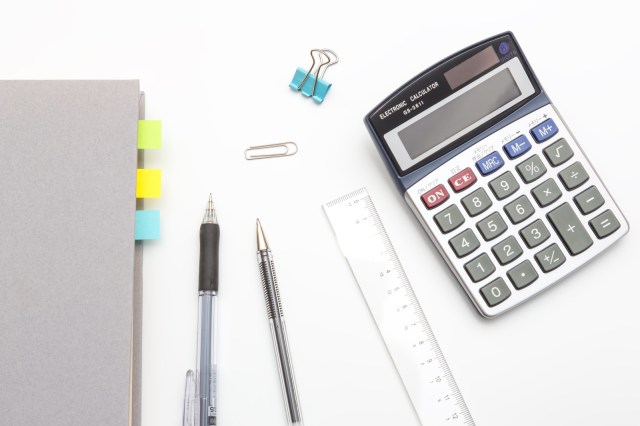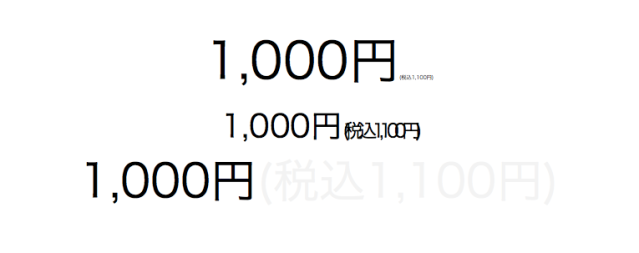
Retailers and stores rush to implement new rule.
If there’s one thing about living in Japan permanent residents, long-haulers, and short-term residents are familiar with, it’s the unique way some price tags are labeled in the country. Often phrased as 税込 (zeikomi), or “tax included,” many times the prices you see on shelves and tags are actually what you pay for at the cashier. Some retailers and stores, however, have opted out from displaying their prices in this fashion, except from April onward, they’ll be required to reflect sales tax within the displayed cost of a product or service.
▼ No, that 100 yen cream bun hasn’t become 110 yen overnight.
Previously, retailers could get away with not listing the total cost of a product and simply adding one of the following three phrases to prices: “+ 税,” “税抜き,” and “本体価格,” which respectively translated to “plus tax,” “not including tax,” and “base price.” Under the new rule, such phrases which leave the final price vague, or essentially make the consumer pre-calculate the total cost before purchase, will be banned.
▼ A world where mental math slowly becomes obsolete…
Restaurants will also be expected to reflect taxes in their listed prices. Furthermore, any establishment serving food must include a reminder on their menu of the different tax rates applied depending on whether a customer chooses to buy takeout or eat in-store. Respectively, a tax rate of 8 percent is applied for takeout whereas the tax rate is slightly higher for dine-in at 10 percent.
Another important aspect of this new rule is it bans retailers from also listing a product’s final prices in a way which is difficult for the customer to read. We made a visual example below for three different ways retailers have been reported to do so, whether it’s making the text obscenely small, scrunching up the font width of the final price, or even graying out the price to near-illegibility:
Interestingly enough, store names are an expectation for this new rule. For example, stores titled as “100 yen stores” or events marketing themselves as “1,000 Yen Across the Board Sale” can remain as is. They don’t have to add a formal tagline about tax inclusion in the cost or adjust their names to be something like “110 yen stores” instead. As long as the products being sold have their final prices including sales tax, whether on the shelf placards or printed on the tags, then all is well.
▼ Taxes suck but are they a good enough deterrent for one of the biggest wallet thinners: impulse purchases.
While some retailers have pushed back against the new rule by insisting consumers will buy less upon seeing seemingly higher prices, it’s still a little difficult to predict how this novel regulation will affect consumer trends in the near future. And if there’s one silver lining to pull, at least folks won’t be put in the embarrassing spot of not having enough cash at the register because they forgot to include sales tax when crunching the numbers in their head.
Source: Jiji Press, Impress Watch
Top image: Pakutaso
Insert images: Pakutaso (1, 2, 3)
● Want to hear about SoraNews24’s latest articles as soon as they’re published? Follow us on Facebook and Twitter!




 New tax exemption system for foreign visitors to Japan starts today!
New tax exemption system for foreign visitors to Japan starts today! Starbucks Japan apologizes for overcharging Frappuccino customers, offers refunds
Starbucks Japan apologizes for overcharging Frappuccino customers, offers refunds Japanese online retailers looking for a change in the sales tax system before they “raise the white flag”
Japanese online retailers looking for a change in the sales tax system before they “raise the white flag” Tokyo ward will give cosplay experiences as character of your choice in exchange for tax donation
Tokyo ward will give cosplay experiences as character of your choice in exchange for tax donation Coca-Cola raises prices in Japan for the first time in 27 years
Coca-Cola raises prices in Japan for the first time in 27 years McDonald’s new Happy Meals offer up cute and practical Sanrio lifestyle goods
McDonald’s new Happy Meals offer up cute and practical Sanrio lifestyle goods All-you-can-drink Starbucks and amazing views part of Tokyo’s new 170 meter-high sky lounge
All-you-can-drink Starbucks and amazing views part of Tokyo’s new 170 meter-high sky lounge Studio Ghibli glasses cases let anime characters keep an eye on your spectacles
Studio Ghibli glasses cases let anime characters keep an eye on your spectacles McDonald’s Japan releases a pancake pie for new retro kissaten coffeeshop series
McDonald’s Japan releases a pancake pie for new retro kissaten coffeeshop series Super Nintendo World expansion gets delayed for several months at Universal Studios Japan
Super Nintendo World expansion gets delayed for several months at Universal Studios Japan Kyoto’s 100 Demons yokai monster parade returns!
Kyoto’s 100 Demons yokai monster parade returns! Hamster abandoned at Tokyo ramen restaurant gets new home
Hamster abandoned at Tokyo ramen restaurant gets new home Dead body found in real-life Totoro’s Forest in Japan
Dead body found in real-life Totoro’s Forest in Japan Starbucks reopens at Shibuya Scramble Crossing with new look and design concept
Starbucks reopens at Shibuya Scramble Crossing with new look and design concept Beautiful Sailor Moon manhole cover coasters being given out for free by Tokyo tourist center
Beautiful Sailor Moon manhole cover coasters being given out for free by Tokyo tourist center Disney princesses get official manga makeovers for Manga Princess Cafe opening in Tokyo
Disney princesses get official manga makeovers for Manga Princess Cafe opening in Tokyo More foreign tourists than ever before in history visited Japan last month
More foreign tourists than ever before in history visited Japan last month Beautiful new Final Fantasy T-shirt collection on the way from Uniqlo【Photos】
Beautiful new Final Fantasy T-shirt collection on the way from Uniqlo【Photos】 Is the new Shinkansen Train Desk ticket worth it?
Is the new Shinkansen Train Desk ticket worth it? Foreign English teachers in Japan pick their favorite Japanese-language phrases【Survey】
Foreign English teachers in Japan pick their favorite Japanese-language phrases【Survey】 Japanese convenience store packs a whole bento into an onigiri rice ball
Japanese convenience store packs a whole bento into an onigiri rice ball We try out “Chan Ramen”, an underground type of ramen popular in the ramen community
We try out “Chan Ramen”, an underground type of ramen popular in the ramen community Studio Ghibli releases Kiki’s Delivery Service chocolate cake pouches in Japan
Studio Ghibli releases Kiki’s Delivery Service chocolate cake pouches in Japan Japan’s bone-breaking and record-breaking roller coaster is permanently shutting down
Japan’s bone-breaking and record-breaking roller coaster is permanently shutting down New definition of “Japanese whiskey” goes into effect to prevent fakes from fooling overseas buyers
New definition of “Japanese whiskey” goes into effect to prevent fakes from fooling overseas buyers Our Japanese reporter visits Costco in the U.S., finds super American and very Japanese things
Our Japanese reporter visits Costco in the U.S., finds super American and very Japanese things Studio Ghibli unveils Mother’s Day gift set that captures the love in My Neighbour Totoro
Studio Ghibli unveils Mother’s Day gift set that captures the love in My Neighbour Totoro Foreign passenger shoves conductor on one of the last full runs for Japan’s Thunderbird train
Foreign passenger shoves conductor on one of the last full runs for Japan’s Thunderbird train Domino’s Japan now sells…pizza ears?
Domino’s Japan now sells…pizza ears? New Japanese KitKat flavour stars Sanrio characters, including Hello Kitty
New Japanese KitKat flavour stars Sanrio characters, including Hello Kitty Kyoto creates new for-tourist buses to address overtourism with higher prices, faster rides
Kyoto creates new for-tourist buses to address overtourism with higher prices, faster rides Sales of Japan’s most convenient train ticket/shopping payment cards suspended indefinitely
Sales of Japan’s most convenient train ticket/shopping payment cards suspended indefinitely Sold-out Studio Ghibli desktop humidifiers are back so Totoro can help you through the dry season
Sold-out Studio Ghibli desktop humidifiers are back so Totoro can help you through the dry season Japanese government to make first change to romanization spelling rules since the 1950s
Japanese government to make first change to romanization spelling rules since the 1950s Ghibli founders Toshio Suzuki and Hayao Miyazaki contribute to Japanese whisky Totoro label design
Ghibli founders Toshio Suzuki and Hayao Miyazaki contribute to Japanese whisky Totoro label design Doraemon found buried at sea as scene from 1993 anime becomes real life【Photos】
Doraemon found buried at sea as scene from 1993 anime becomes real life【Photos】 Tokyo’s most famous Starbucks is closed
Tokyo’s most famous Starbucks is closed One Piece characters’ nationalities revealed, but fans have mixed opinions
One Piece characters’ nationalities revealed, but fans have mixed opinions We asked a Uniqlo employee what four things we should buy and their suggestions didn’t disappoint
We asked a Uniqlo employee what four things we should buy and their suggestions didn’t disappoint Princesses, fruits, and blacksmiths: Study reveals the 30 most unusual family names in Japan
Princesses, fruits, and blacksmiths: Study reveals the 30 most unusual family names in Japan Nara’s “deer cookie” rice crackers get their first price increase in 28 years
Nara’s “deer cookie” rice crackers get their first price increase in 28 years Supermarket throws away bench because of sales tax hike, angers many
Supermarket throws away bench because of sales tax hike, angers many Adorable two-yen stamp distracts us from our anger over Japan’s impending tax hike
Adorable two-yen stamp distracts us from our anger over Japan’s impending tax hike Japanese convenience stores want you to be honest and request to pay higher sales tax rate
Japanese convenience stores want you to be honest and request to pay higher sales tax rate Sugar-free beer coming from Kirin this October
Sugar-free beer coming from Kirin this October Manga-loving Minister Taro Asō buys Golgo 13 on morning of tax hike
Manga-loving Minister Taro Asō buys Golgo 13 on morning of tax hike Japan’s hydrogen fuel cell stations begin to open, but are they worth the switch?
Japan’s hydrogen fuel cell stations begin to open, but are they worth the switch? Starbucks unveils second new festive Christmas drinkware range for 2020
Starbucks unveils second new festive Christmas drinkware range for 2020 Japanese prefectural governor wants foreign tourists to pay special extra fee
Japanese prefectural governor wants foreign tourists to pay special extra fee World Heritage Site in Gunma struggling to crowdfund repair costs
World Heritage Site in Gunma struggling to crowdfund repair costs How to put together a senbero drinking/snack session at Japan’s 100-yen convenience store【Photos】
How to put together a senbero drinking/snack session at Japan’s 100-yen convenience store【Photos】 Japanese politician pushing to double price of cigarettes in Japan by start of 2020 Olympics
Japanese politician pushing to double price of cigarettes in Japan by start of 2020 Olympics A life-sized bust of Kenshiro from Fist of the North Star from Osaka is tax deductible!
A life-sized bust of Kenshiro from Fist of the North Star from Osaka is tax deductible! Japanese university developing coronavirus vaccine in form of a nasal spray
Japanese university developing coronavirus vaccine in form of a nasal spray Japan’s Family Mart celebrates International Women’s Day with year-long sanitary goods discount
Japan’s Family Mart celebrates International Women’s Day with year-long sanitary goods discount Japanese Komeito party suggests 20,000 yen (US$189) grant for graduating high school students
Japanese Komeito party suggests 20,000 yen (US$189) grant for graduating high school students
Leave a Reply